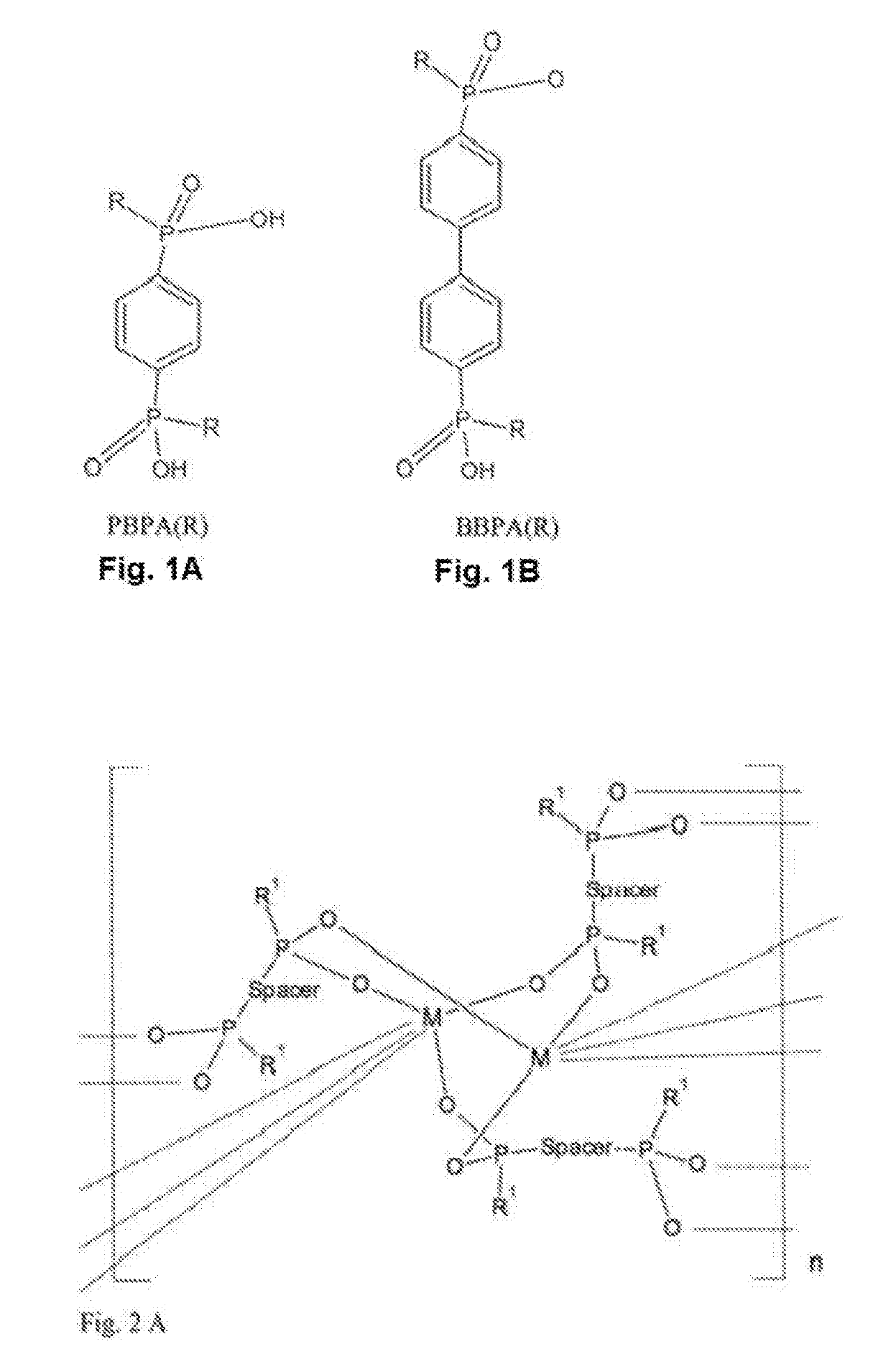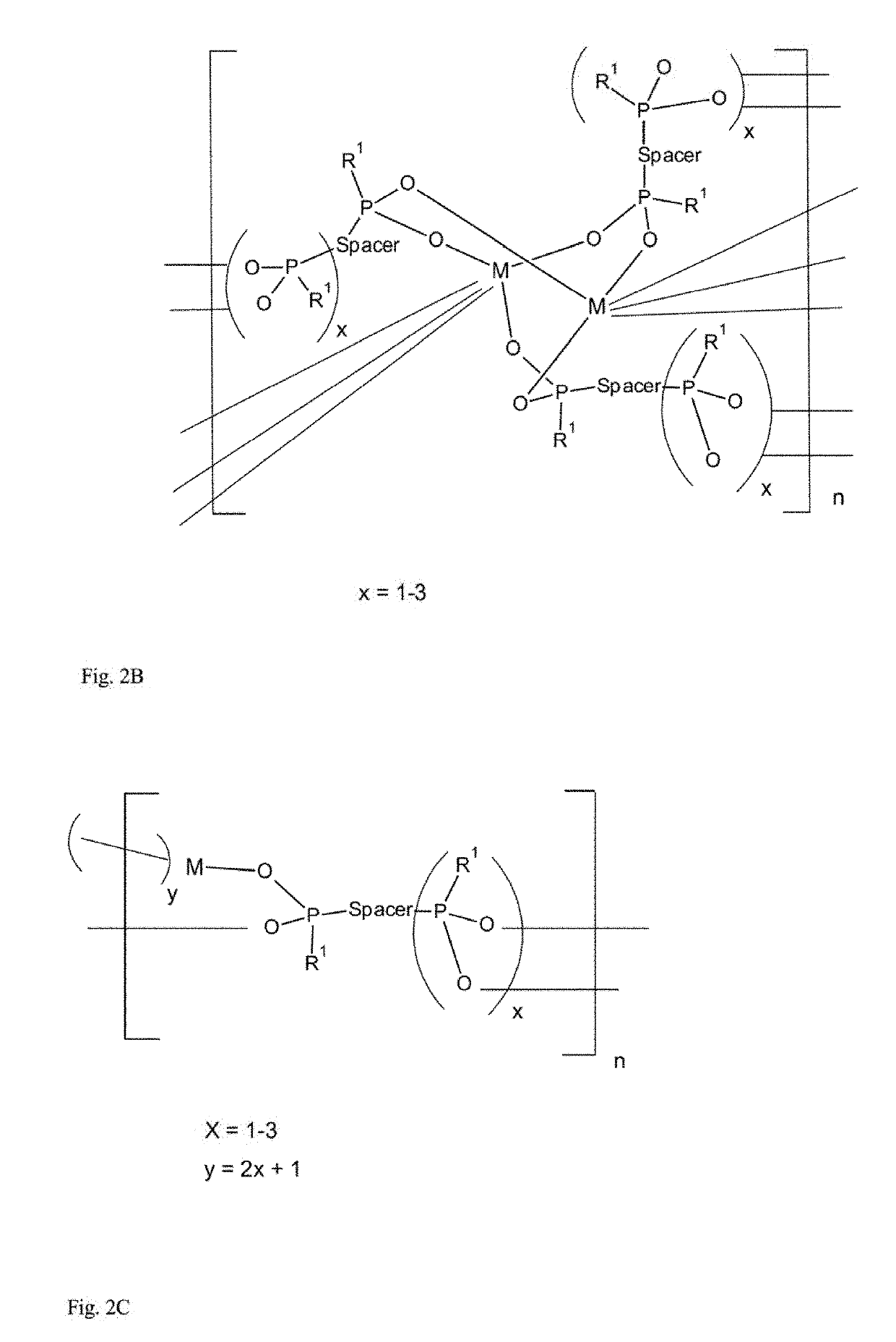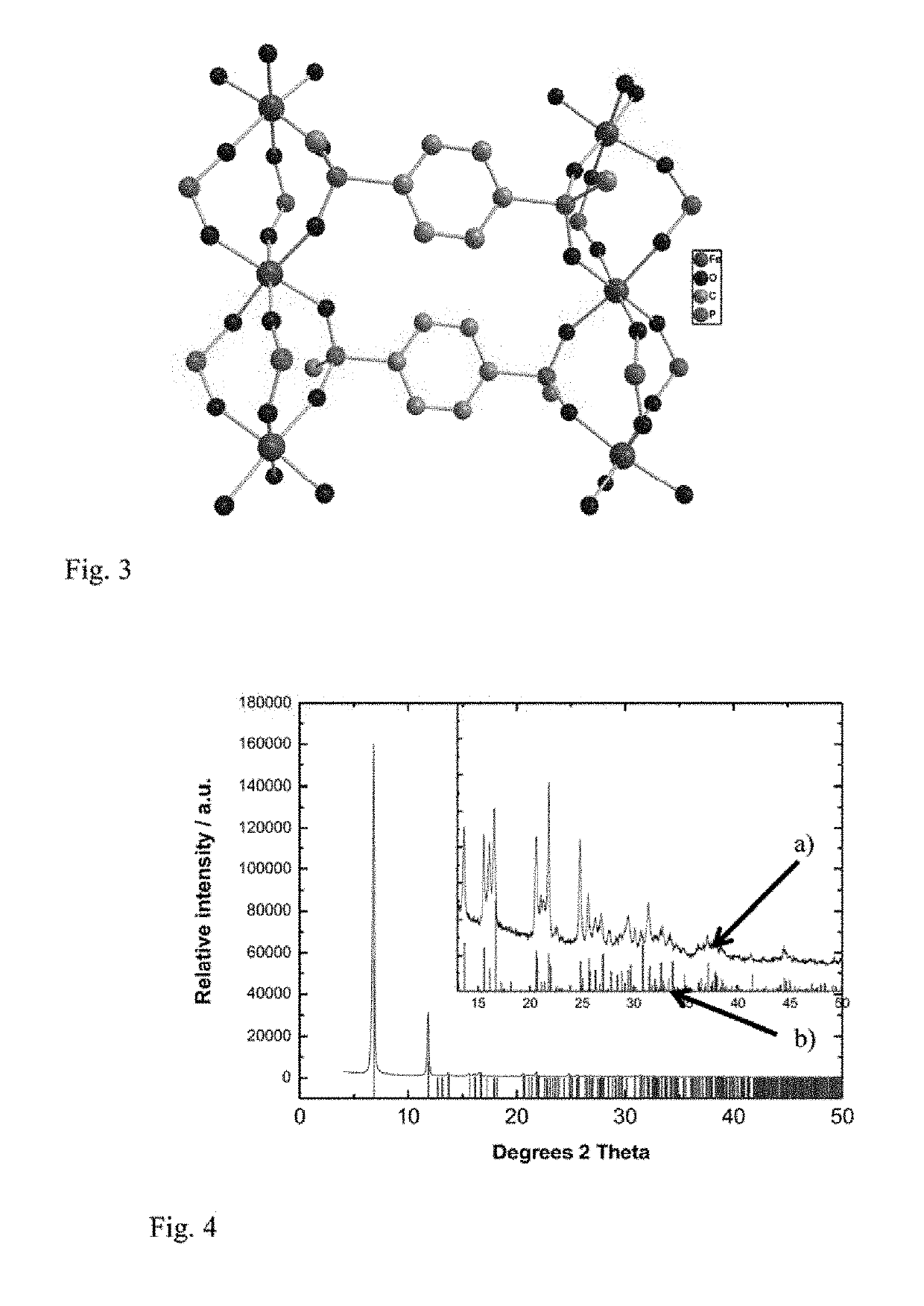Porous material for storing of molecules and its use
- Summary
- Abstract
- Description
- Claims
- Application Information
AI Technical Summary
Benefits of technology
Problems solved by technology
Method used
Image
Examples
examples of invention
Completion
Example 1
[0084]Preparation of Porous Fe-MOF with PBPA(Me)
[0085]The initial suspension containing 18.8 mg of phenylene-1,4-bis(methylphosphinic acid)—PBPA(Me) with the amount of substance of 0.08 mmol, 10.8 mg FeCl3.6H2O with the amount of substance of 0.04 mmol and 5 ml of anhydrous EtOH was heated in an autoclave with capacity of 50 ml with teflon inlet under autogenous pressure at 250° C. for 24 hours without stirring.
[0086]After the autoclave cooled, the resulting suspension was centrifuged at 10000 rpm for 5 minutes and the product deposit was separated through decantation. The product was washed first with water (3×30 ml) and acetone (3×30 ml) and it was dried in air at laboratory temperature. Coordination polymer of porous MOF with monomer unit iron (III) phenylene-1,4-bis(methylphosphinate) with weight of 10 mg was acquired. MOF was characterised using the adsorption isotherm of nitrogen, and from it its specific surface (using t-plot method) and porosity (using HK-...
example 2
[0088]Preparation of Porous Al-MOF with PBPA(Me)
[0089]The initial suspension containing 18.8 mg of phenylene-1,4-bis(methylphosphinic acid)—PBPA(Me) with the amount of substance of 0.08 mmol, 9.7 mg AlCl3.6H2O with amount of substance of 0.04 mmol and 5 ml of anhydrous ethanol was heated in an autoclave with capacity of 50 ml with teflon inlet under autogenous pressure at 250° C. for 24 hours without stirring.
[0090]After the autoclave cooled, the resulting suspension was centrifuged at 10000 rpm for 5 minutes and the product deposit was separated through decantation. The product was washed first with water (3×30 ml) and acetone (3×30 ml) and it was dried in air at laboratory temperature. Coordination polymer of porous MOF with monomer unit aluminium phenylene-1,4-bis(methylphosphinate) with weight of 10 mg was acquired. MOF was characterised using the adsorption isotherm of nitrogen, and from it its specific surface (using t-plot method) and porosity (HK-plot) were determined, and t...
example 3
[0091]Preparation of Porous Y-MOF with PBPA(Me)
[0092]The initial suspension containing 18.8 mg of phenylene-1,4-bis(methylphosphinic acid)—PBPA(Me) with the amount of substance of 0.08 mmol, 7.8 mg YCl3 with the amount of substance of 0.04 mmol and 5 ml of anhydrous ethanol was heated in an autoclave with the capacity of 50 ml with teflon inlet under autogenous pressure at 250° C. for 96 hours without stirring.
[0093]After the autoclave cooled, the resulting suspension was centrifuged at 10000 rpm for 5 minutes and the product deposit was separated through decantation. The product was washed first with water (3×30 ml) and acetone (3×30 ml) and dried in air at laboratory temperature. Coordination polymer of porous MOF with monomer unit phenylene-1,4-bis(methylphosphinate) with weight of 10 mg was acquired. MOF was characterised using the adsorption isotherm of nitrogen, and from it its specific surface (using t-plot method) and porosity (HK-plot) were determined, and the specific surf...
PUM
| Property | Measurement | Unit |
|---|---|---|
| Temperature | aaaaa | aaaaa |
| Temperature | aaaaa | aaaaa |
| Temperature | aaaaa | aaaaa |
Abstract
Description
Claims
Application Information
 Login to View More
Login to View More - R&D
- Intellectual Property
- Life Sciences
- Materials
- Tech Scout
- Unparalleled Data Quality
- Higher Quality Content
- 60% Fewer Hallucinations
Browse by: Latest US Patents, China's latest patents, Technical Efficacy Thesaurus, Application Domain, Technology Topic, Popular Technical Reports.
© 2025 PatSnap. All rights reserved.Legal|Privacy policy|Modern Slavery Act Transparency Statement|Sitemap|About US| Contact US: help@patsnap.com



